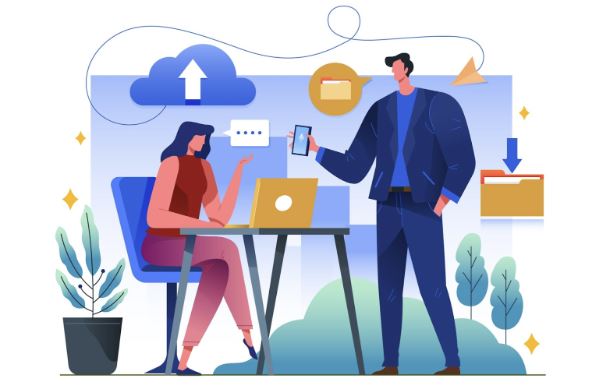Content creation is not just about writing blogs or creating visual content; it's about engaging audiences in versatile ways. One aspect often overlooked is the power of audio content, easily obtained by converting MP4 files to the more accessible MP3 format.
This process is vital for creators who want to maximize their reach and diversify their content. This guide will walk you through the importance of such conversions, choosing the right tool, practical usage, and the creative advantages of incorporating MP3 files into your digital strategy.
Understanding the Need for Conversion in Content Creation
Content creators constantly juggle various formats. While MP4 files are commonplace for videos, they're not always conducive to projects focusing on sound. MP3 files, however, are universally playable, shareable, and less space-consuming, offering a seamless listening experience.
Converting MP4 to MP3 isn’t about changing the content; it’s about accessibility and convenience for your audience. Whether it's for a podcast, an audio version of a video interview, background music, or sound effects, having audio content enables creators to broaden their distribution channels. It allows audiences to engage with content even when actively watching a screen isn’t possible, like during commutes or multi-tasking.
Step-by-Step Guide to Convert MP4 to MP3
Whether you're a content creator looking to extract a piece of audio from a video or just a user wanting to convert your favorite music video into an audio track for easy listening, this guide is for you. Here's a comprehensive step-by-step approach to Convert MP4 to MP3.
Step 1: Access the invideo MP4 to MP3 Converter
- Open your preferred web browser and navigate to invideo’s official website.
- From the homepage, locate and click on the “MP4 to MP3 converter” option.
Step 2: Upload the MP4 File
- Once you're on the MP4 to MP3 converter tool, you'll find an option to upload your video file.
- Click on “Upload Your File” to select the MP4 file you wish to convert from your device storage. You can also drag and drop the file into the designated area.
- Wait for the upload to complete. Note that upload times vary based on the file's size and your internet connection speed.
Step 3: Select Output Preferences (Optional)
- After your file is uploaded, you may have options to adjust certain preferences before converting. This step is often optional but beneficial for those looking to customize output specifications.
- If available, you can set the audio quality or bitrate settings. Choosing a higher bitrate typically results in better audio quality but a larger file size. The other way to improve the audio quality is by choosing the audio visualizer.
Step 4: Initiate the Conversion Process
- Locate and click on the “Convert” or “Start Conversion” button on the website. The tool will now start the process of extracting the audio from your MP4 file and converting it into an MP3 format.
- The conversion process may take a few minutes, depending on the server's workload and the size of the uploaded video file.
Step 5: Download Your MP3 File
- Once the conversion is complete, the page will refresh to display a “Download” button.
- Click on this button to save the newly converted MP3 file to your device. You might need to select a destination folder for the download, depending on your browser settings.
Step 6: Review and Use Your File
After the download is complete, navigate to the destination folder you chose and click on the file to play it, ensuring the audio quality meets your expectations.
Your MP3 is now ready for use in your various projects, whether it be adding the file to your podcast, integrating it into your video editing workflow, or uploading it for streaming purposes.
Creative Ways to Utilize MP3s in Content Strategy
MP3s are not just for music; they’re a strategic content format. Podcasts are prime examples of successful audio-integrated content, perfect for audiences who prefer listening over reading or watching.
Here are creative ways to use MP3s:
Audio articles or blogs: Offer an MP3 version of written content for users on the go.
Interviews and discussions: Record them as MP4, but convert to MP3 for easier distribution and accessibility.
Supplementary audio for visuals: Background music or narration can enhance eBooks, presentations, or photo slideshows.
For inspiration, look at creators who successfully leverage audio, like podcasters Joe Rogan or Sarah Koenig, who create content that often starts in video form but gains massive popularity in audio.
Legal and Ethical Considerations
Navigating the legal landscape of digital content can be tricky. When using third-party content, especially in order to increase conversion rate, you must respect copyright laws and fair use policies.
It’s important not to use copyrighted music, narrations, or any audio without proper authorization. When in doubt, seek legal counsel or use royalty-free audio sources to avoid infringement issues.
Optimization and Advance
Beyond conversion, sophisticated tools enable creators to fine-tune audio files. Editing features can trim unnecessary lengths, adjust volumes, or even add effects. Furthermore, knowing where your content will be most consumed should influence how you optimize audio files.
For instance, if your audience primarily uses streaming services, consider file sizes and formats that are best suited for streaming.
Looking Ahead: The Future of Content in Audio Format
The future of digital content is promising, especially for audio. With the rise of AI and machine learning, we might soon witness tools that can convert files into detailed, emotional audio experiences, adapting to listener responses in real-time.
The potential for VR integrated with audio content also opens avenues for immersive experiences, redefining how audiences interact with digital content.
Harnessing the Power of Sound in Brand Building
In an era of multimedia content, sound becomes an identity. Recognizable audio cues or signature sounds in content can enhance brand recall. For instance, the simple yet iconic "Intel bong" or Netflix's "Ta-dum" sound creates instant brand connections.
As a content creator, developing a unique sound identity through your MP3 content, such as a particular style of background music or a characteristic intro to your podcasts, can differentiate your brand and create familiarity among your audience.
Enhancing Audience Engagement Through Interactive Audio Content
Engagement is not just visual. With the rise of smart speakers and voice assistants, interactive audio content is a frontier for creators.
By converting informative videos or interviews to MP3, creators can leverage platforms like Amazon Alexa or Google Home, enabling their content to be more accessible and interactive. Imagine your audience asking their smart speakers to play the latest episode of your podcast or an audio post from your blog, enhancing user experience through ease and interactivity.
The Ecosystem of Audio Content
The world of MP3 is vast, extending beyond just converted content. Platforms like Spotify, SoundCloud, and Apple Music have diversified to include podcasts and various audio content, signifying a growing ecosystem where MP3 files thrive.
Collaborating with other creators, featuring guest speakers, or having your content featured on different platforms can expand your reach. Additionally, understanding the analytics provided by these platforms can give insights into audience preferences, helping tailor future content.
Community Building and Feedback Loop
Audio content is personal and creates a sense of intimacy with the audience, laying the groundwork for strong community building. Encouraging feedback, conducting Q&A sessions, or even crowd-sourcing content ideas can be done efficiently through audio formats.
Platforms like Discord offer community spaces where creators can share their MP3 files and receive instant feedback, fostering a collaborative environment.
Security and Backup
With the increasing significance of digital content, security becomes paramount. Ensure your original and converted files are backed up regularly. Using cloud storage services or external hard drives can prevent loss due to unforeseen circumstances. Moreover, consider watermarking your audio or using secure distribution methods to prevent unauthorized copying or piracy of your content.
Conclusion
Converting MP4 to MP3 is more than a technical process; it's a strategic move in content creation. This practice offers a way to diversify content offerings, expand audience reach, and even step into the future of digital consumption.
As we brace for more advanced tech integrations in content creation, understanding and utilizing such fundamental processes become all the more critical. So, explore these tools, engage with your audio content, and let the sounds you convert today become the overtures of your digital narrative's future.


.jpg)




